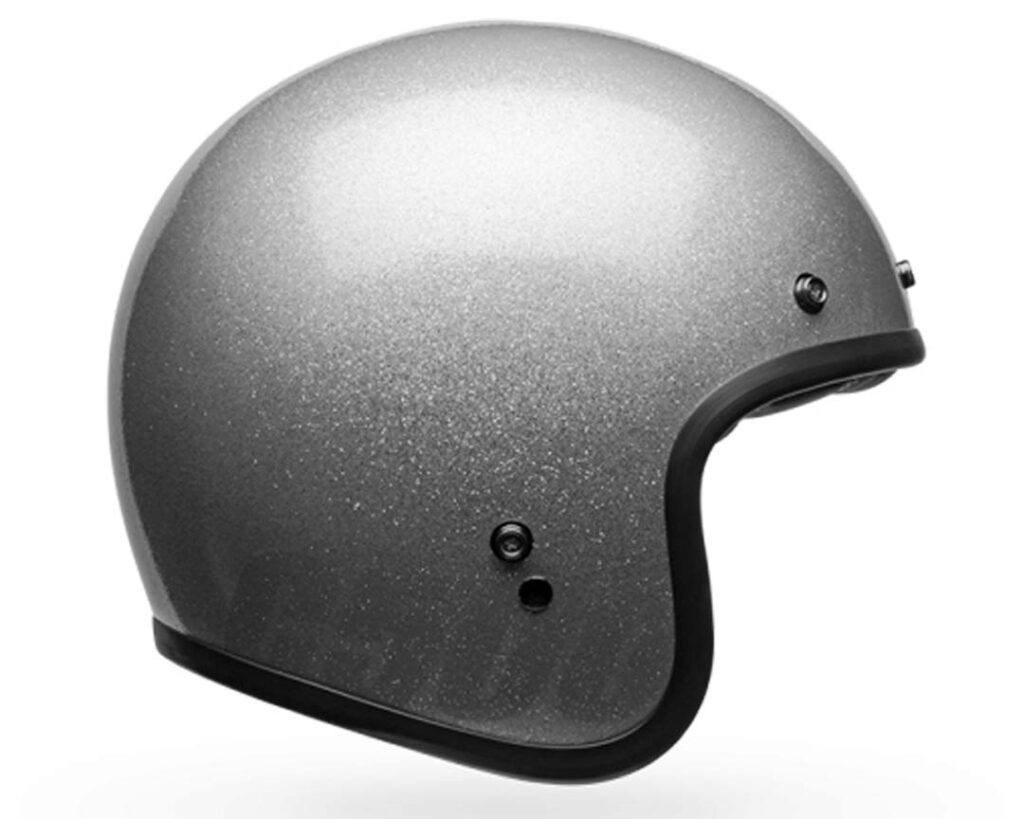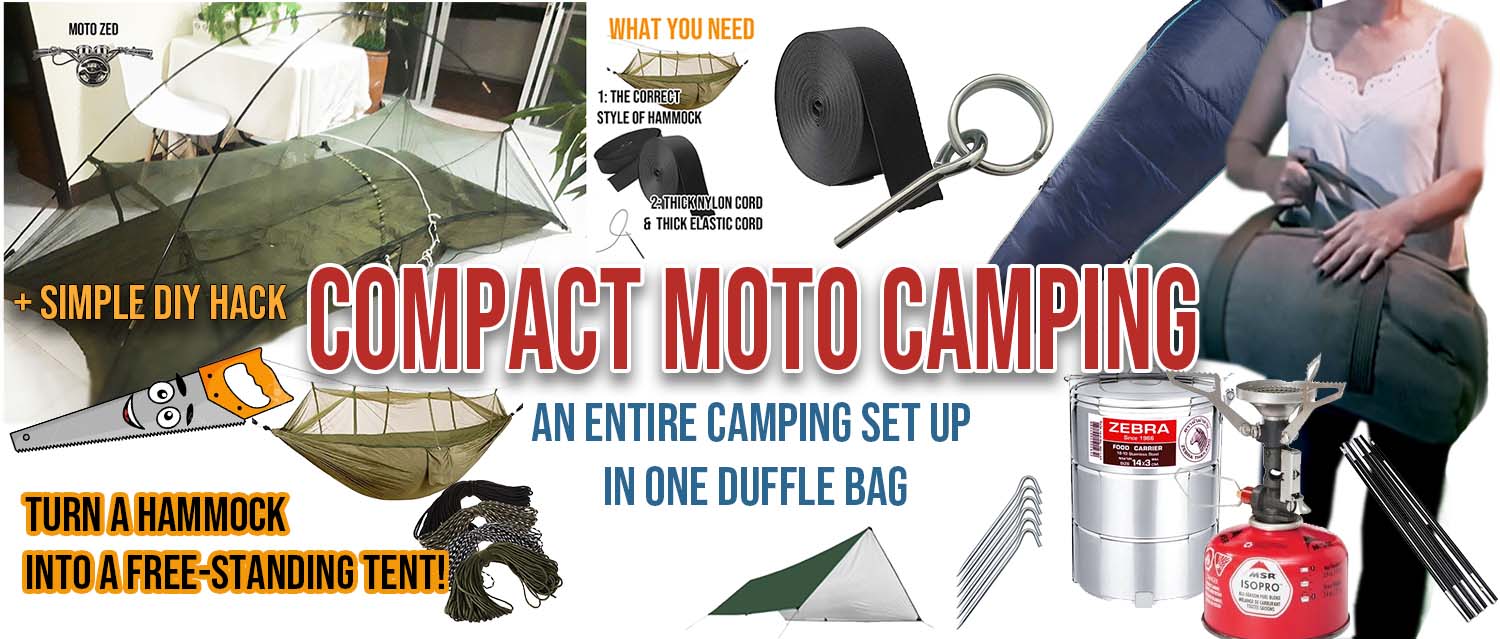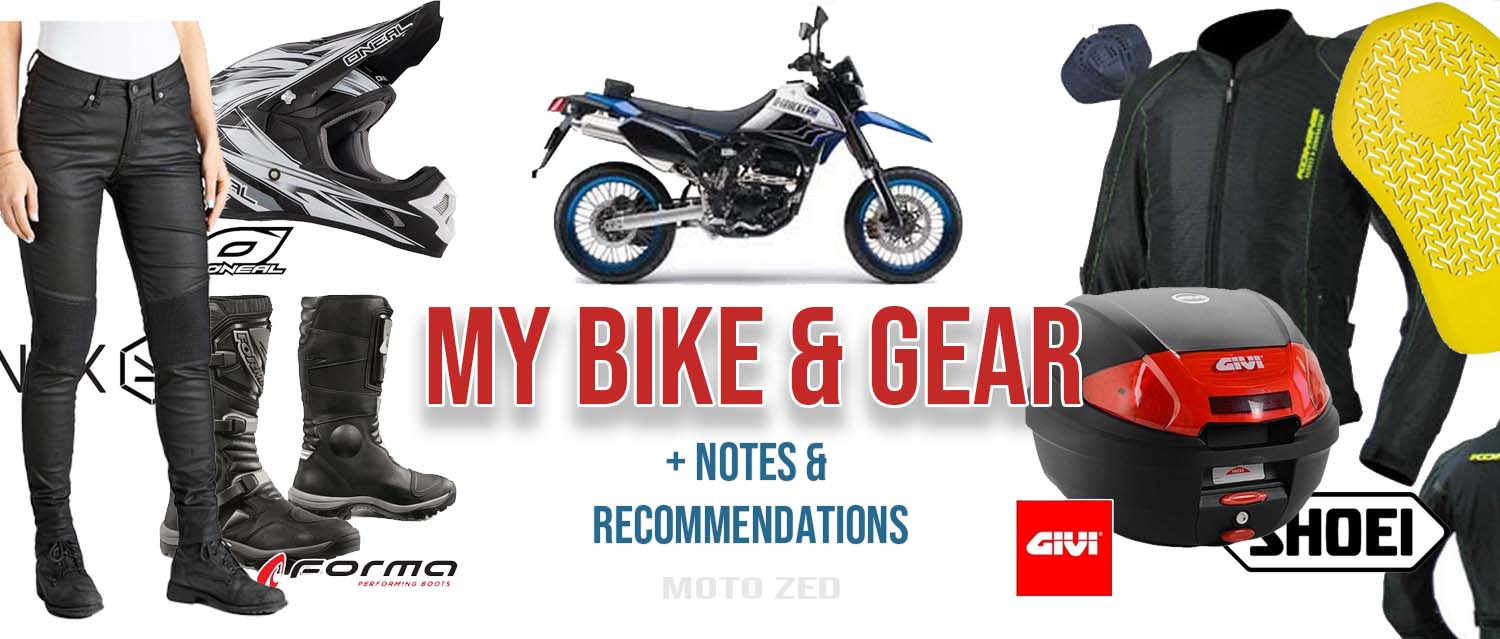Motorcycle helmet guide. The motorcycle helmet is the most important piece of motorcycle safety gear that you will ever own. Out of all your gear decisions, this one is the one to focus on the most. The choice (and fit) of a helmet is important to get right. Use this guide to help you make the correct choice.
Motorcycle helmets are the most important piece of motorcycle safety gear that you will ever own. Out of all your gear decisions, this one is the one to focus on the most. The choice (and fit) of a helmet is important to get right. Use this guide to help you make the correct choice.
Table of Contents
Motorcycle Helmet Guide
1: Types of Helmets
Full-Face

Modular

Motocross / Mx

ADV

Open-Face

Half-Face

Full-Face Helmet
The full-face helmet is a motorcycle rider staple. It fully encloses the head, face and chin, and is a good choice for most riding activities. Given that around 50% of all motorcycle accidents involve the chin, a fully enclosed helmet should really be your number one choice.

With it’s moulded aerodynamic design, you won’t meet any wind resistance when riding at speed and outside noise is minimized (loss of hearing is a potential hazard when riding at high speeds.) These helmets come with ventilation sliders, to help regulate the temperature levels, help with sweat evaporation and help prevent the visor fogging.
Modular Helmet
The modular/flip-up helmet is a combo of the open face and full face helmet. The compromise is that they are more weighty than the full face helmet, due to the additional design features (ie: the hinge for the flip-up front area).

The modular is made from similar materials as the full face, with the same focus on safety and comfort. This helmet, along with the Dual Sport is a popular choice for adventure riders, who are looking for more versatility.
MX Helmet
Motocross helmets are designed to allow more airflow than full-face helmets, offering maximum protection at minimum weight. These helmets are often slightly less padded out than the full-face helmet, and need to be worn with goggles.

helmets are often slightly less padded out than the full face helmet, and need to be worn with goggles.
ADV / Dual Sport Helmet
Designed to be used on-road and off-road, the dual sport is a good compromise for those who enjoy riding both road and dirt.

The helmet padding matches the full-face helmet (more padding than off-road), and the design has been tailored to be more aerodynamic. The less protruding chin bar and visor helps prevent the head from being thrown back when riding at speed.
Open-Faced Helmet
Also known as the 3/4 helmet, the open face is a popular lightweight helmet for many riders. The compromise, however, is the lack of chin protection.

Many of these helmet styles will come with a clear visor, which protects against the elements.
ADV / Dual Sport Helmet
Designed to be used on-road and off-road, the dual sport is a good compromise for those who enjoy riding both road and dirt.

The helmet padding matches the full-face helmet (more padding than off-road), and the design has been tailored to be more aerodynamic. The less protruding chin bar and visor helps prevent the head from being thrown back when riding at speed.
Half-Face Helmet
With just the top of the head being minimally protected, this helmet is the least safe option to wear (bar wearing none at all). Most often this style of helmet will not meet motorcycle safety requirements.

2: How To Get The Right Fit
Helmet Guide Sizing Chart

Video Helmet Guide: The Best Fit
Skip ahead to 2.12 if you want to see the fitting guide only
3: What Makes a Helmet Safe?

4: Which One Should You Choose?
The best choice of helmet ultimately depends on what kind of riding you are doing. If you are riding mainly on the road, then a full-face helmet is your best choice. However, if riding more off-road then obviously a motocross helmet is the better option.

If you are riding on-road with a bit of trail and off-road thrown in, then a dual sport helmet is a nice compromise between on-road and off-road, which many adventure riders wear.

As for the open-face and half-face helmets, these provide the least amount of protection (with the half-face being minimal). These helmets, although convenient, don’t offer nearly as much protection as the other options. Given that around half of all motorcycle accidents involve the chin, then it makes more sense to wear a helmet with more protection. A better option would be the modular helmet, which can be flipped up into an open-face style and flipped down for more protection. The modular is another popular choice for many adventure riders, due to the versatility it offers.


The video above also contains clips from my personal video diary from an accident I had in 2011 whilst wearing an open-face helmet. I have placed a warning prior to this segment playing, in case you prefer not to watch.
If you wish to read a detailed story on this accident, you can do so here.
I hope this helmet guide helped. Stay Safe!
You Can Thank/Support Via:
@Motogirlthailand
Riding solo in Thailand and sharing my adventures, insights, and tips is a passion of mine. If you’ve enjoyed my report, there are a few ways you can support me and help keep the wheels turning.
Say Thanks!:
Consider buying me a coffee through BuyMeACoffee.com/motogirlthailand or becoming a patron on Patreon.com/motogirlthailand. Your support helps me continue creating content, exploring new routes, and bringing you closer to the rich culture and landscapes of Thailand.
Motogirl Shop!:
Check out my shop page where you can find MotoSplore GPS Route Map guides, exclusive MotoGirlThailand merchandise and products I recommend for every rider. Every purchase gives you a great adventure and helps fund and support the running costs for Motogirlthailand.com









